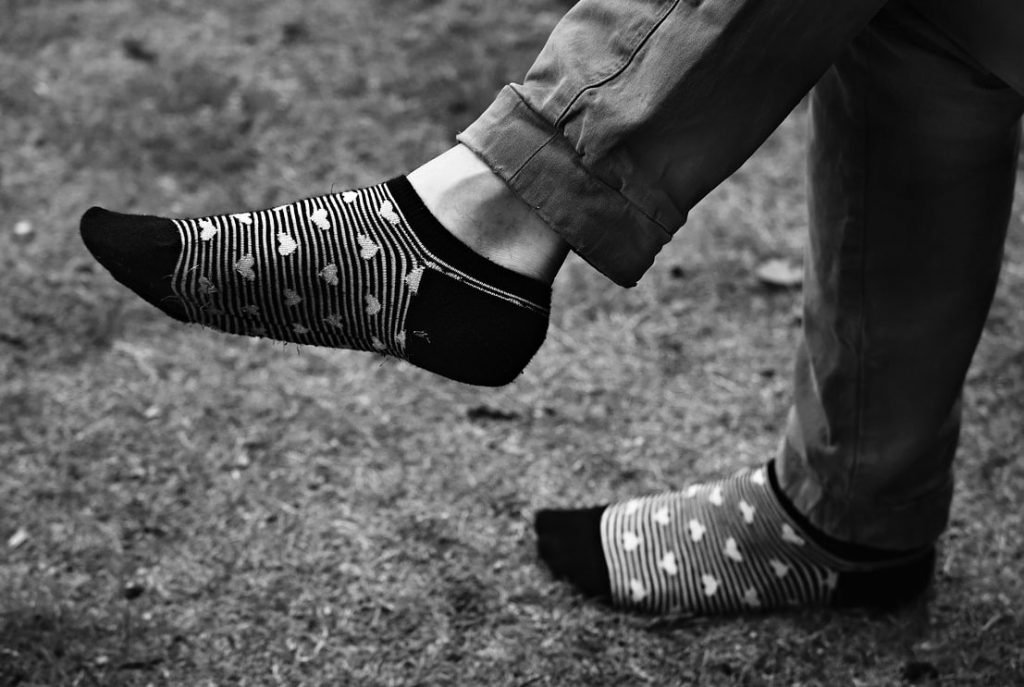The next best thing to running barefoot is running in just socks. However, it is important to exercise caution when beginning to run without shoes – whether barefoot or in just socks.
Here are our top tips for barefoot running in just socks.
5 Tips for barefoot running in socks

Because we are used to running in shoes, starting to run barefoot with just socks can cause injury if not prepared for.
Prepare yourself with these tips for a safer and smoother transition.
1. Allow your feel to gradually adapt
It is important to acclimatize your feet to a new surrounding environment. Rather than directly running, start by walking barefoot in just socks.
Test different surfaces and how your feet with socks grip on them. Feel your feet on gravel, grass, and running tracks. This will also allow for time for the soles of the feet to become tougher.
2. Prepare your legs
Tight calves put more pressure on both the back of the foot at the Achilles tendon and the front of the foot at the plantar fascia. This can lead to more stress and cause pain in the feet.
Stretching your calves, hamstrings, and arches is essential to keep your feet and legs safe. Regular massages will also help the legs heal from repeated stress.
3. Work on the technique
The biggest difference between running with and without shoes is in the mechanics of how the foot hits the ground. When you run with shoes, the heels hit the ground first. However, when running barefoot or with just socks, you should land on your midfoot instead. This reduces the risk of injury and stress on the knees and hips.
Practice running short distances with just socks and concentrate on hitting the ground with your midfoot first.
Wearing shoes also allows for longer strides. When running with just socks, shorten your strides. Short and quick strides also help in avoiding the heels to strike first.
4. Start soft and small and gradually increase the distance
When beginning to run with just socks, choose a soft surface at first, such as grass or a rubberized running track. This will reduce impact on the knees.
Start by running short distances and gradually build up. Try not to do too much too soon. You can start with running a quarter of a mile to half a mile every alternate day and take it to a mile in ten weeks.
A good rule to follow is to increase your weekly mileage by no more than 10 percent every week.
5. Listen to your body
Pain is not good. If you start feeling that any part of your foot or leg is hurting, stop. Allow for the pain to heal before starting again.
The feet are working harder when running barefoot in just socks, so it is important to take care of the fact that overuse can cause injury. Adequate sleep and gap days provide time for the tissues to recover.
You may also like: Do you wear socks with barefoot shoes, Guide to Transition to Barefoot Running, and List of Sports You Can Do Barefoot